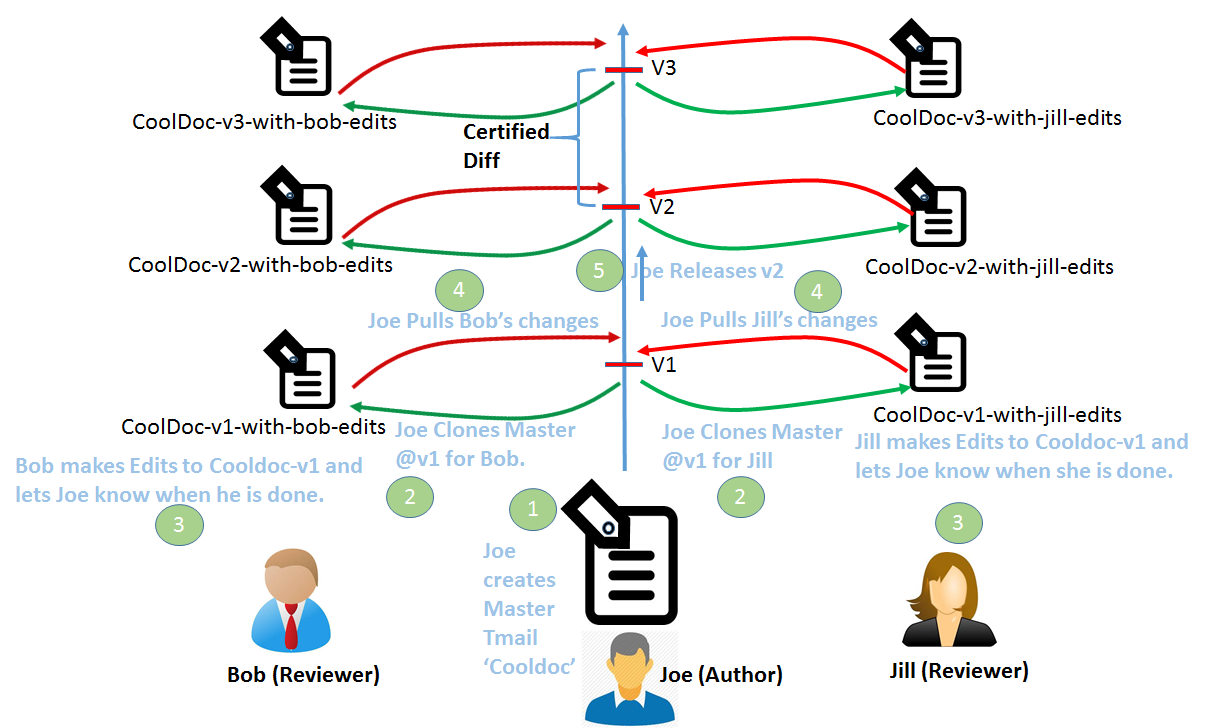Easily Manage Facilitated Collaboration
A large portion of collaboration in an enterprise is of a facilitated nature whereby some user coordinates the process. This is a technique often used in Email and is particularly painful. Through support for Certified Diffs and Certified Clones, this is easily supported in TMail.
When it comes to process collaboration, there are two common approaches
- Direct Collaboration
- Facilitated Collaboration
In Direct Collaboration, multiple users directly collaborate (by, say, updating some content). In Facilitated Collaboration, a user, the facilitator, coordinates the process. Especially for more complex collaboration, facilitated collaboration is often the superior approach as it becomes increasingly difficult to encode all the rules and permissions that would be required to run such a process directly.
Facilitated Collaboration is also related to the Editor-Reviewer style of document collaboration where an editor is in charge of the document and sends the document out for reviews which are then incorporated back by the editor who can choose to accept, ignore or modify suggested changes.
Facilitated Collaboration is often used in EMail where a facilitator will mail out a document (in the form of an attachment). The reviewers will modify the document and send it back to the facilitator who can then incorporate changes. Facilitated collaboration in EMail suffers from the same ‘version misery’ problem that direct collaboration suffers from.
TMail has two features that enable facilitated collaboration, viz. Certified Clones and Certified Diffs.
Certified Clones allow a TMail to be cloned at any particular version. This certified clone is then edited by the reviewer. Because the Certified Clone (like any TMail) supports ‘diffs’, the ‘diff’ between a Clone later version and the Clone original version is effectively the ‘diff’ between the Clone later version and the Original TMail.
The facilitator can use this ‘diff’ to merge in changes as appropriate into the ‘parent’ TMail. It is very easy to construct a multi-round facilitated collaboration based on such an approach.
The figure below illustrates a multi-round facilitated collaboration.





